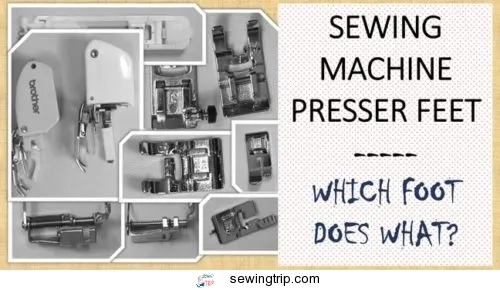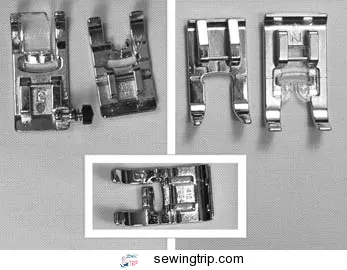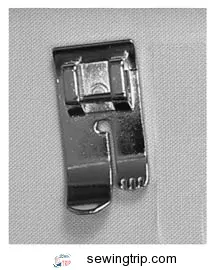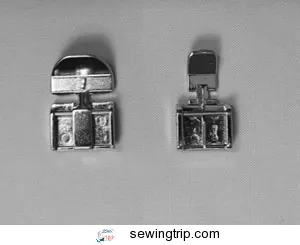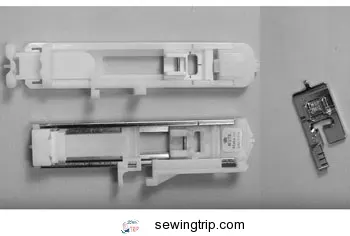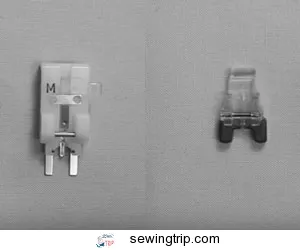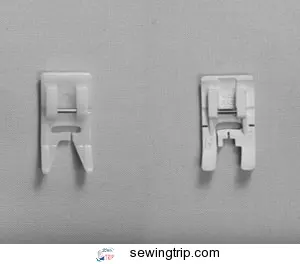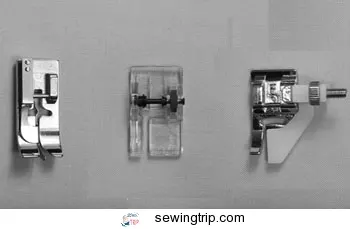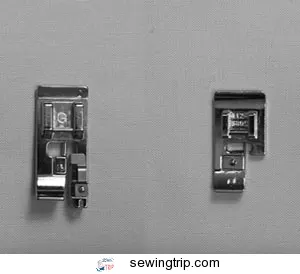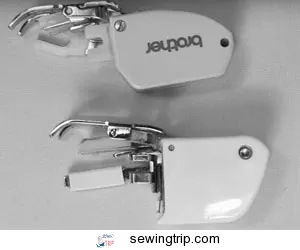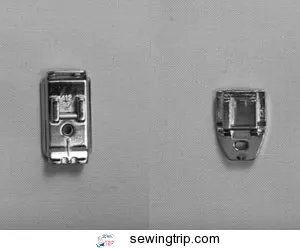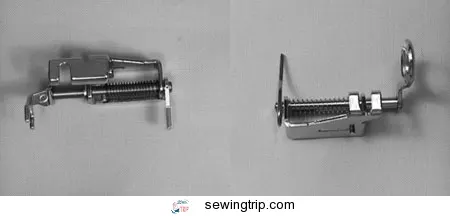This site is supported by our readers. We may earn a commission, at no cost to you, if you purchase through links.
This guide helps you understand the presser feet that came with your sewing machine and what you can do with them. I would also show you how to determine the shank size and type for your presser feet.
After reading this guide, you will also learn which additional presser feed you need to buy extra to make your sewing task easier.
What is a presser foot? A presser foot is an interchangeable part of any sewing machine that allows you to easily perform specific tasks.
Read more!
Table Of Contents
Some basic sewing machine presser feet
Our first point of contact is the base feet that came with your sewing machine. It is important to note that you will use these standard presser feet more often.
Standard/Universal foot
Each sewing machine you buy comes with a standard or universal foot. These are standard presser feet that usually come with your sewing machine.
You will use these presser feet for most of your sewing. Universal presser foot may vary between different makes and models.
If you have two different makes and models of sewing machines, they may have different universal feet and appearance.
In the image below, on the far left is the Husqvarna standard foot, and to the right of it is the Brother standard foot.
This Husqvarna foot is best suited for precision sewing, topstitching, and edge stitching. This brother’s foot, on the order hand has a shape of transparent plastic to see through your foot. Universal presser foot only), we make it for straight stitching only nothing else.
Note the difference with others; the straight stitch only presser foot has a hole between them (just a hole).
This cannot use type of a standard foot for zigzag or decorative stitches. It is necessary and a must not to use it for other types of stitches with flexible stitch length. Doing this will damage your sewing needle or your sewing machine.
As you can see, depending on the standard or universal foot with your sewing machine, choose the stitch type. to consider before choosing the most suitable foot.
Zipper foot
Most sewing machines often come with a zipper presser foot. No matter how simple your sewing machine is, there will always be a zipper foot.
The zipper presser foot can for sewing zippers, piping, cords, and sewing close to an edge. Zipper feet are never the same, it will on sewing machine makes and models.
Regardless of sewing machine makes or models. They have a distinct bulldozer look. I recommend a zipper foot with slack at the edges.
If the zipper foot with your sewing machine, they highly recommend that you purchase one. It wilThislp you with most sewing projects.
Buttonhole foot
Rarely can there be a sewing machine without a stock buttonhole foot? What makes it different is the sewing machine’s power and nature (automatic for computerized and manual buttonholes for manual sewing machine).
Those two are on the left of its automatic buttonhole foot. All you have to do is place your button, and the machine will do the work.
If your sewing machine is not capable of automatically creating buttonholes. Do it, don’t worry; you have a buttonhole foot that allows you to create a buttonhole like the unique one on the right.
Buttonhole
This one may be useful to some but not important. There is often confusion as to what it does. As small as it looks, they can be used in sewing buttons. You don’t need to worry if you don’t have this; I don’t find it useful either. Hand sewing buttons is often more useful to me.
Non-Stick Glide Foot
It is also important to have one of these in your accessory box. This foot comes in handy when working with difficult and thick fabrics (such as leather and plastic-like fabric) that stick to the common metal foot.
Blind Hem Foot
The three feet pictured below all serve similar purposes, but what exactly are they used for? Simply put, they are used for blind hemming and blind stitching.
The two feet on the left are adjustable, while the right foot is not. These feet are indispensable if your sewing machine does not come with a blind hemming function, as not all machines do.
However, if your machine does come with this function, the three extra feet are not totally necessary. In fact, blind hemming is quite simple to do manually, so don’t go out of your way to buy these extra feet.
Cloudy foot
Also called the edging or overcast foot, it’s one of those sewing accessories that could come with your sewing machine. Usually, it often comes with a sewing machine that allows overcast stitching.
The overcast stitch does what a serger or overlock sewing machine does. It sews the fabric edge with a zigzag stitch and then wraps the thread around the fabric edge.
That’s it with the basic sewing foot that is often packaged with a sewing machine.
But there is more!
Specialty Presser Feet– Not Always Included
The following is the presser foot you should buy and will probably need while sewing.
Due to their uniqueness, they are not always included as accessories. Who knows, you might be lucky enough to have them there.
Walking foot
If you frequently quilt, dressmaker, or stitch multiple layers of fabric, you must have a walking foot. This foot prevents fabric from bunching and allows for even feeding, creating a better stitch and improved machine performance.
Invisible Zipper Foot
The invisible zipper foot is most ideal for dressmaking. If you plan to do a lot of dressmaking in the future, never do so without having an invisible zipper foot. Most dresses need an invisible zipper, and this is the right foot to make this happen.
Don’t even attempt to insert an invisible zipper with the standard zipper foot.
Likewise, you will always need a standard zipper foot to work with an invisible zipper foot.
Darning Foot
A darning foot cannot be considered a necessity since it often comes as an extra with your sewing machine. It features a spring mechanism that is used for free motion embroidery, which is its most applicable use. However, most users use it for darning.
One final point:
How do you determine the shank size or type of your presser feet? The following point would help you understand the different and common shanks used on sewing machines.
Last words
In summary, there are two presser feet that you must invest in if it’s not packaged with your sewing machine: A walking foot and an invisible zipper. You already have a clue about what you have and what you need for specific tasks.
Buying a sewing foot is an investment, so give thorough consideration to your sewing machine brand and model before making the commitment.
Sewing feet have different widths and sizes for fitting into your sewing machine.
Brand specificity is not that important in some applications. However, to buy a generic foot, just ensure it works or will fit with your sewing machine.

